How to be a better all-natural farmer
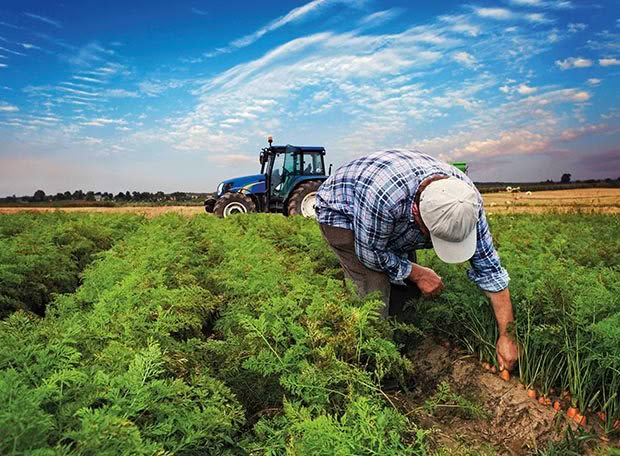
There is a whole new world of natural products you can use to increase the fertility of your farm, but how do you know which one is the best one?
Words: Charles Merfield & Marion Johnson, The BHU Future Farming Centre www.bhu.org.nz
There has been a phenomenal growth over the last 10 years in the use of biostimulants and biofertiliser products. Many mainstream academics have been sceptical of these products, considering they are not based on ‘real’ science, while some farmers and growers have been buying and using them successfully in increasing amounts. The opposite is also true; some farmers and growers have been sceptical about some of the claims being made, and there are academics who are passionate advocates. There is no simple list of what works and what doesn’t, so this article is to help guide you to decide which products have real potential to help you farm better and more profitably, and those that should be treated with scepticism.
BIOSTIMULANTS
These are divided into four major sub-types, some with sub-types of their own:
Microbial inoculants
• free-living fungi
• arbuscular mycorrhizal fungi (AMF)
• free-living bacteria
Protein hydrolysates & amino acids
Humic substances
• humic acids
• fulvic acids
Seaweed extracts
This is not an exhaustive or exclusive list. For example, compost teas contain microbes so they could be included as ‘microbial inoculants’ even though they contain more microbe species than are listed, but they may also contain proteins, amino acids, and humic substances. Seaweeds, the most common biostimulants, are not the only plants that extracts are made from – many terrestrial plants are also used in both commercial and farm-made extracts.
The range of mechanisms by which these products can impact plant growth and quality are almost limitless. They include:
• enhancing nutrient availability in soil, eg through increased mineralisation of soil organic matter by microbes;
• increasing root biomass or root surface area, eg bacteria that release plant growth-promoting chemicals;
• increasing the plant’s nutrient uptake capacity, eg mycorrhizal fungal association and bacterial inoculants for legumes increase nitrogen uptake;
• resistance to drought and salinity stress through microbes that produce protective compounds or induce the plants to produce more of their own protectants.
BIOFERTILISERS
As biofertilisers can be made from any previously living animal or plant, there is no equivalent categorisation as for biostimulants. Generally, they can be grouped by how processed or decomposed they are. For the broad definition of biofertiliser, it includes materials that are in a raw, or close to raw state, like slurry and farm yard manure (FYM), while those that are well decomposed include compost and biodigestate. For the narrower definition, raw (un-decomposed) seaweed can be used as a fertiliser, while proprietary biological seaweed fertilisers and biostimulants process the raw seaweed using a range of techniques to concentrate the desired components and/or enhance certain components to create the final product.
Foliar-applied biofertilisers (and mineral fertilisers) can boost nutrient uptake even when soil nutrient levels are at an optimum. In some cases this can increase yield and quality, but in other cases it can also lead to ‘luxury uptake’ which can have negative effects such as lodging, sappy growth, increased pest attack etc. More is not always better. Soil-applied biofertilisers cannot be taken up by plant roots because the molecules are mostly too big to get across the root epidermis. They have to be decomposed (mineralised) into inorganic salts/minerals to be absorbed. Nutrients supplied by biofertilisers sit in the same queue for plant uptake as the existing soil nutrients, so the potential for a biological form of a nutrient to have a markedly different effect to a mineral form on immediate plant uptake is small.
However, there are important system level effects to take into account. Mineral fertilisers don’t contain biological forms of carbon and don’t supply energy to soil biology so they can cause a reduction in soil organic matter as microbes use up the soil organic matter to make use of the extra mineral nutrients. By definition, biofertilisers do contain biological carbon so there is a much reduced likelihood that they will cause microbes to consume soil organic matter. Whether they cause a significant increase in soil organic matter depends on how much is applied. For example, compost, manure, biodigestate, wood chips and similar bulky materials, applied at tens of tonnes per hectare on a regular basis, are just about guaranteed to noticeably increase soil organic matter. Highly processed products applied at kilos per hectare are unlikely to result in comparable increases in soil organic matter.
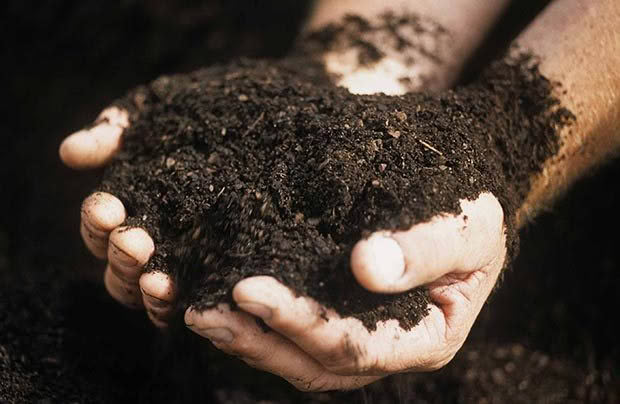
WHAT ARE ‘BIO’ PRODUCTS?
There are no formally agreed definitions of biostimulants or biofertilisers, in part because new forms and types have been rapidly appearing and the industries as a whole are evolving quickly. The main difference is that biostimulants don’t contain many nutrients, while biofertilisers do.
BIOLOGICAL STIMULANTS
Biostimulants are a substance or microorganism that, when applied to plants or the soil, stimulates existing biological and chemical processes in the plant and/or associated microbes (eg, mycorrhizal fungi) to enhance the plants’ growth, yield and/or quality through improving nutrient update, nutrient use efficiency and/or tolerance to abiotic stress (eg, heat, saline soils).
BIOLOGICAL FERTILISERS
Biofertilisers are materials of biological origin, eg plants, seaweed, fish, land animals etc, that contain sufficient levels of plant nutrients (nitrogen, phosphorus, potassium, calcium, magnesium etc) in forms that are either directly absorbed by plants, or are sufficiently quickly decomposed to available forms, to cause an increase in plant growth and/or quality. Some consider biofertilisers to mean processed, commercial/proprietary products but the broader term includes traditional materials such as manures and composts.
BIOLOGICAL CONTROL
‘Biocontrols’ use one or more living organisms, typically microbes and insects, to control diseases, insects and weeds. The biocontrol agent has no direct effect on the crop plant, only the benefit of having the pest controlled (although the impact of that can be a profound increase in growth). Some products like trichoderma fungi can act as both a biostimulant and a biocontrol. Adding to the confusion is that a number of biocontrols are marketed as biostimulants to get around the extensive safety and efficacy testing that is required for pest control products, not biological organisms.
WHAT WE CAN LEARN FROM A VINING PEA FARMER
Determining whether any particular product works is where things get complex and a bit tricky, so we’ll start with an anecdote. Back in the 1980s, the first wave of seaweed biostimulants came to market. A vining pea grower in the UK was interested in the claims being made, but thought he would test the products before using them over his whole farm. He sensibly set up a simple experiment in a field, spraying several strips of the seaweed product up his field of peas with unsprayed strips in-between. It was soon pretty obvious where the peas had been sprayed as the plants were both bigger and greener, a property that lasted until harvest time. To test the effect on yield he drove the harvester across the strips: every time he hit one of the sprayed strips the harvester groaned and he had to put it down a gear and hit the throttle. He assumed that it was the weight of extra peas.
Fortunately, his farm adviser suggested that he get off the harvester and actually have a close look at the crop itself. It did not take long for the grower to realise that the extra work the harvester was doing on the sprayed strips was nothing to do with peas, because there were hardly any pods on the sprayed vines, let alone peas. The seaweed biostimulant was one that contained plant hormones (phytohormones) which are chemicals that regulate plant growth. In this case the phytohormone was one that encouraged vegetative growth in peas and suppressed reproductive growth. The strain on the harvester was not lots of peas – it was lots of vine. There are a couple of key lessons to take from this true story.
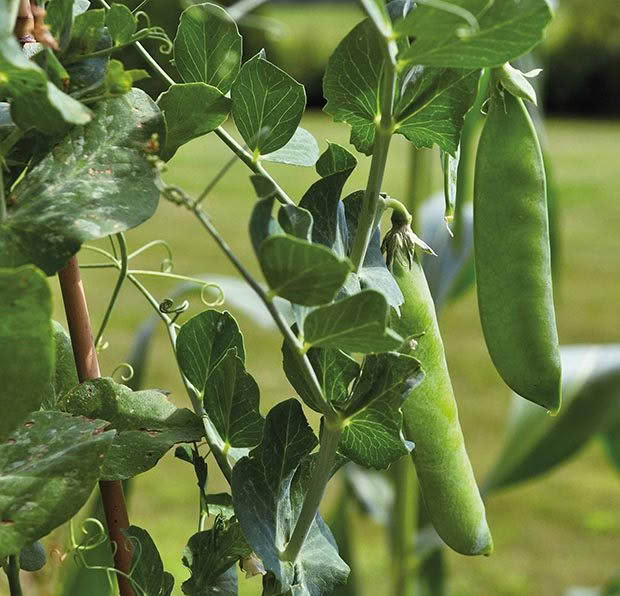
• The plant-soil-climate system is one of the most complex things in the universe
It is simply impossible to predict the effect of complex products (those containing several ingredients, as opposed to one or two) on plants and the rest of the system. The only way to determine the effects is by empirical scientific experiment (spraying strips up the field).
However, you must make a direct measurement of the results such as count the number of pods and peas on the vines and not rely on indirect measurements like the response of the harvester.
• Where products have real and consistent effect, it may not be the one you want:
Bigger vines and less peas were not what the farmer wanted. It is essential that the product has been tested on your specific crop (even specific cultivars) for the effect you want to achieve, at the point in the crop’s lifecycle you plan to use it (eg, early growth, post flowering). Just as there are selective herbicides that will kill weeds and not the crop, any one biofertiliser or biostimulant may have quite different results on one crop species than another, and different effects at different growth stages.
Designing an experiment to truly measure outcomes and responses can be a quagmire, so how do you assess scientific claims about a product? The key over-arching questions are:
• does the research replicate real-world use?
• is the experimental methodology appropriate?
• does the experimental design measure the correct parameters?
• do we know what to measure?
• is the experiment run over a long enough time frame?
REAL-WORLD USE
A recent review paper on biostimulants (see the reference on page 29) listed a wide range and number of experiments, but the majority of these were not undertaken in ‘real world’ conditions and this is an important caveat. Scientists often start work in the laboratory ‘in vitro’ (meaning ‘in glass’), mostly because it is quick and cheap and they can get a research publication out of the work. If the lab work looks promising (or not), they then proceed to pot trials, growing plants in pots in a glasshouse. This is more expensive than the lab work and more realistic, and it produces another paper. But experienced scientists know that neither of these methods usually bears any relation to performance on a farm or crop field so they often start ‘real world’ trials as soon as possible.
If research, even high quality research, is not conducted under real world conditions that match your crop and farm using the exact crop species, even the same cultivars for some species (eg grapes) on similar soils and similar climates, they may not be relevant to your operation. In New Zealand, Canterbury and Hawkes Bay results should be considered comparable, but others areas would not. This all means you should pretty much ignore lab and pot-based experiments. Results from experiments that sound like they could have been done on your block are the ones you should pay the closest attention to.
CAN YOU TRUST HOW THE EXPERIMENT IS DONE?
‘Experimental methodology’ is scientific jargon for how an experiment was done. It covers things such as the treatments used, the amount and type of fertiliser used, the untreated ‘null’ controls, the statistical analysis, the general setup (eg in-vitro lab experiments, pot experiments, field experiments), and all the details like soil type, soil tests, soil moisture, weather for the whole experiment, plant species and cultivar, age when planted, etc. Determining if the experimental methodology is appropriate is unfortunately where the quagmire gives way to the snake pit. It is surprisingly
easy for scientists to set experiments up to get the results they want, and it is even easier for scientists that don’t have the right expertise to set an experiment up that fools them into thinking they have an accurate result.
Then there is the interpretation because scientists can disagree over what the results mean. Just because a paper has been “published in a peer reviewed journal” does not mean that the information is inviolable. Scientists often undertake ‘meta-analysis’ where they take all the experiments in journal papers that have researched a particular topic, then combine the results into one giant statistical analysis. But they often throw out 10-40% of the papers due to invalid methodology, where they consider the results of those trials to be unreliable. It is also pretty common for different experiments to give contrary results due to the vagaries of nature and agricultural science. As an example, in the European Union, cultivar comparison experiments have to comply with the 5 × 5 Rule: the comparisons have to be done in at least five locations for a minimum of five years for the data to be considered reliable so you get 25 repeats of the same field experiment.
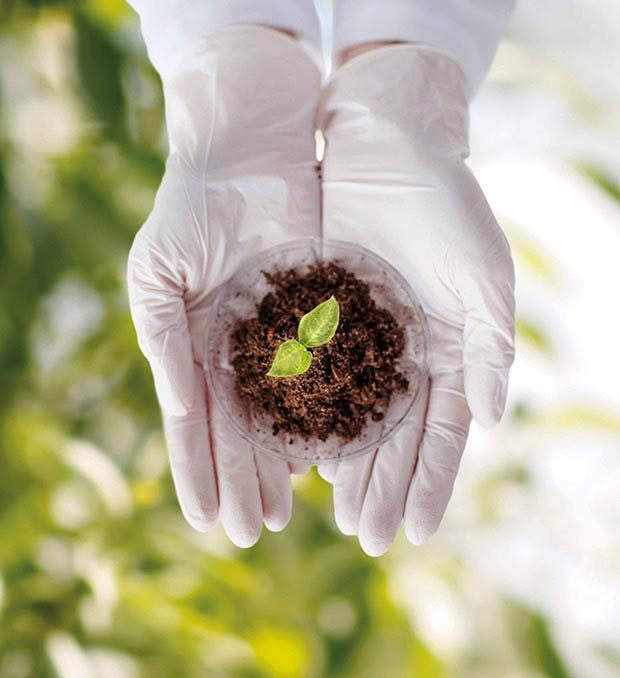
It takes a lot of scientific training and even more experience to make a good call, and in the end it is still a subjective decision. There is little chance that a layperson can make that judgement – if you want a view on a particular experiment then you need to find an independent scientist experienced in the same specialism, but even then they can only give you their opinion. At the end of the day, individual papers count for little. It is the amassed results from across a large number of experiments, across many years, plus the experiences from farmers and growers using products and techniques for real, that eventually determines if an effect is real or not. Until such broad consensus it built up, caveat emptor applies.
ARE THEY MEASURING THE RIGHT PARAMETERS
From a farmer and grower perspective, it may seem pretty obvious what parameters to measure. It’s the ones that get turned into profit such as the stuff you harvest: lambs, grapes, apples, lettuces, wheat grains. Disappointingly, this is often the measurement that gets missed by scientists. However, it is also important to measure ‘intermediate’ parameters, such as growth during the whole season, plant nutrient levels etc, as these are important for helping you to understand what is going on. There is a mantra in science that ‘correlation does not imply causation’. That is, if you only measure yield, you don’t know why the yield increased so you only have a correlation which is weak science. If you measure other parameters, these can point to how the increase was caused, giving you stronger science.
WHAT TIME FRAME DO THEY COVER
For products such as biostimulants that have an immediate and relatively short term effect, trial duration is typically one crop cycle, based on the assumption that there is little or no residual effect; if you stop using the product, then the effect stops after a week to a few months. However, it is rare for effects to be truly short term so, if resources allow, the experiment should be run for three to five years to see what the long-term effects are. For products such as biofertilisers or anything that impacts on soil processes, duration should be as long as possible because soil processes and performance change very slowly. It really can take decades for the long-term effects to be fully shown. Truly long-term soil experiments around the world have now been running for over a century and data from these shows that it takes up to 50 years for soil to truly reach a new equilibrium.
When the first 10-30 years data from these experiments are analysed they often give quite different results compared with analysis after 50 years. If scientists are being really hard core about such trials, they will throw out the data from the first five years, have a look to see if there are any trends in the next five years, and then consider data after the first decade as starting to become reliable. If you are running or looking at data from experiments that affect the soil, a trial should really be kept running for five years at a minimum, but ideally a decade.
HOW TO DO A DIY EXPERIMENT ON YOUR BLOCK
One of the downsides with biostimulants and biofertilisers is that their effects can vary widely depending on things such as the crop species, soil type, soil nutrient levels, weather/climate etc so for an experiment to be useful to you on your block, it needs to be done under local conditions. It’s very expensive to repeat dozens of experiments, and there’s nothing in it for scientists, so it doesn’t happen.
However, with the wide range of products out there, there is likely to be one that will improve your production and profit, and the question is how to identify it. The answer is DIY experiments.
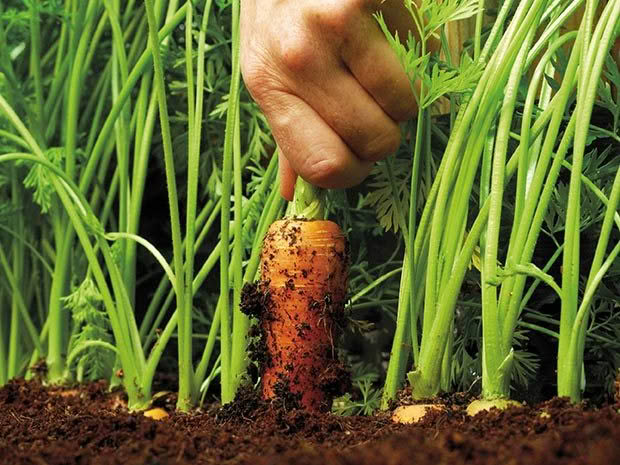
HOW TO DO YOUR OWN EXPERIMENTS
Agricultural experiments are among the simplest, and the value of DIY experiments is that they are done on your crop or pasture so the results are 100% meaningful for your operation. All you need to do is follow a few simple rules.
LIMIT WHAT YOU’RE GOING TO TEST
Treatments are the different products you want to test. More is not always merrier as the amount of work increases considerably.
DECIDE ON A REGIME
It is important to decide the application regime from the start: is the product to be applied once at the start of the trial, or sprayed on weekly? The application regime should match what would be done in the real crop.
HAVE A ‘CONTROL’
You need to have something to compare, a control area, where nothing is applied to the crop, and/or you use your current practice, eg your current fertilisers. The control needs to be replicated and randomised just the same as the treatments.
DECIDE ON A DURATION
Getting the experimental duration right is really important. For biostimulants that is typically one crop cycle but ideally three or more, while for biofertilisers the duration should be as long as possible, ideally five years but a decade is much better.
REPEAT, REPEAT, REPEAT
Like the farmer spraying several strips of seaweed fertiliser on his peas from page 24, you need to have several applications of the treatments. Traditionally the minimum is four replicates but in a perfect world six to eight is best.
BE AS RANDOM AS YOU CAN
It is impossible to emphasise how important proper randomisation is. The pea farmer sprayed alternating strips up his field, but it would have been better if he’d flipped a coin at the end of each row – head for spray, tails for a control – and kept going until he had enough replicates (spray strips) of the seaweed
and unsprayed (control). Randomisation helps take chance out of the experiment, so you know you didn’t accidentally add all the treatment you are testing on an area that by chance had higher or lower fertility anyway.
LAYOUT
The standard layout for field trials is the randomised complete block (RCB). Figure 1 shows a RCB experiment layout with four treatments (a, b, c, d) and four replicates. The key to blocking is that each of the four treatments (or however many there are) is found in every one of the blocks, creating a complete block.
FIGURE 1. RANDOMISED COMPLETE BLOCK LAYOUT
Block 1 d a c b
Block 2 d c a b
Block 3 a d b c
Block 4 a c b d
PLOT SIZE
Plots need to be big enough so that the natural variation found in agriculture is minimised, so bigger is better.
MEASURE WHAT MATTERS
Don’t make the mistake the pea grower did of taking his harvester’s performance as a measure of pea volumes. It is essential to measure the final product, the thing you sell to make money. That’s easy in agriculture or horticulture but harder with livestock (very large plots and lots of stock are required), so with animals, the surrogate measure of pasture growth and laboratory analysis is mostly used.
STATISTICAL ANALYSIS
Statistics are typically the most confusing part. Fortunately the ANOVA test (analysis of variance) found in most spreadsheets is typically used. However, if you are not comfortable with statistics get help from someone who is.
GET ADVICE FROM A REAL SCIENTIST
While the basics of an experiment, as outlined, are really pretty straightforward, there are niceties in the details that take experience to get right so talking to a scientist can help you.
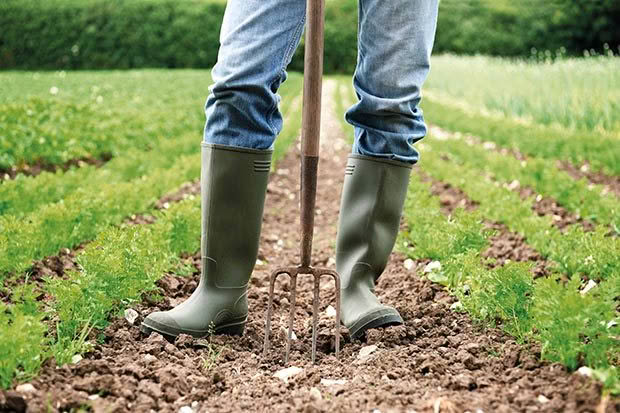
WHAT IS YOUR RETURN ON INVESTMENT?
If the product you are applying costs $200/ha to use but only increases income by $100 you are $100 out of pocket (profit has reduced $100), although there may be some other benefit, like an increase in soil organic matter over the longer term which results in bigger yields in future. But the ultimate measurement of an experiment is not yield, it is profit, so it is critical that gross margins for all the treatments are calculated to test for the level of profit or loss.
HOW TO RIG A FERTILISER EXPERIMENT
To sell more fertiliser, the companies selling it will want to do tests in nutrient-deficient soil, not soil with excessive nutrients. When you’re looking at an experiment’s results, you need to know the nutrient levels of the soil used in the tests, if it was deficient, optimum or excessive, and then interpret the results on that basis. Always take the results of fertiliser trials with a pinch of salt.
ABOUT THE AUTHORS
Dr Charles Merfield is the head of the Future Farming Centre at the Biological Husbandry Unit (BHU), based at Lincoln University, and has a background in ‘real world’ organic horticulture and agriculture. Dr Marion Johnson has a background in sheep and cattle farming, a PhD in Veterinary Parasitology, and is now researching the problems of declining animal health on many farms, believing that healthy stock thrive on healthy feed grown in healthy soils.
Love this story? Subscribe now!
 This article first appeared in NZ Lifestyle Block Magazine.
This article first appeared in NZ Lifestyle Block Magazine.
